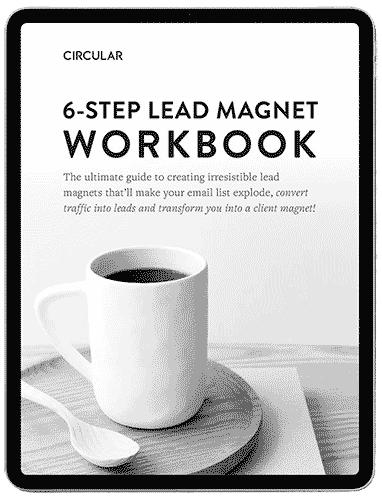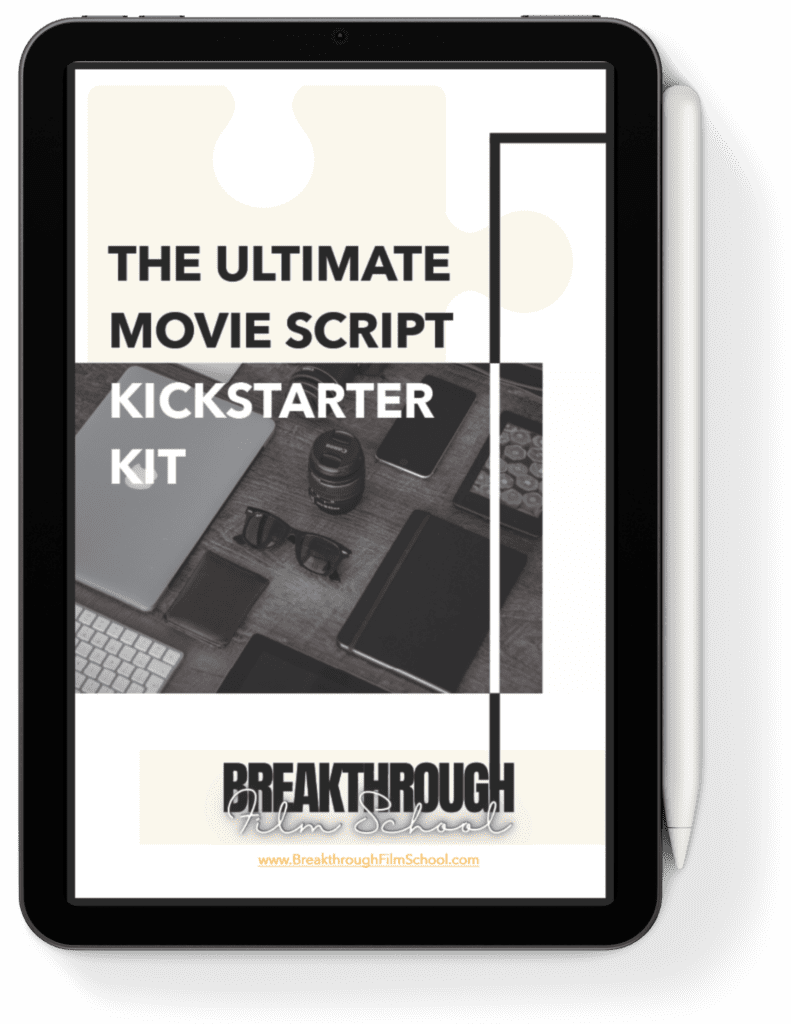Why Your Film is Gonna Suck & What You Can Do to Make Sure it Doesn't
Most people are scared to make a film because it feels overwhelming, but once they see it’s not actually that complicated, something else rears it’s head. It’s the fear that their movie won’t be any good.
If this is a concern of yours, don’t worry, you are not alone. All you need to know are the key areas to manage, which will determine the production value of a film. Also, included here are some solutions to deal with these warning signs if they come up in the filmmaking process.
No matter what your filmmaking experience is, your movie can be great. Even if any of these potential problems pop up for you it’s okay as long as you deal with them right away. Being able to identify what makes a bad movie is a key part of your job as a filmmaker or producer.
To be effective at this, we are going to look at the key areas where things commonly go wrong when making a film. The point here is to keep this simple and not overcomplicate the process. So, for now, we will only focus on the areas that make or break a movie.
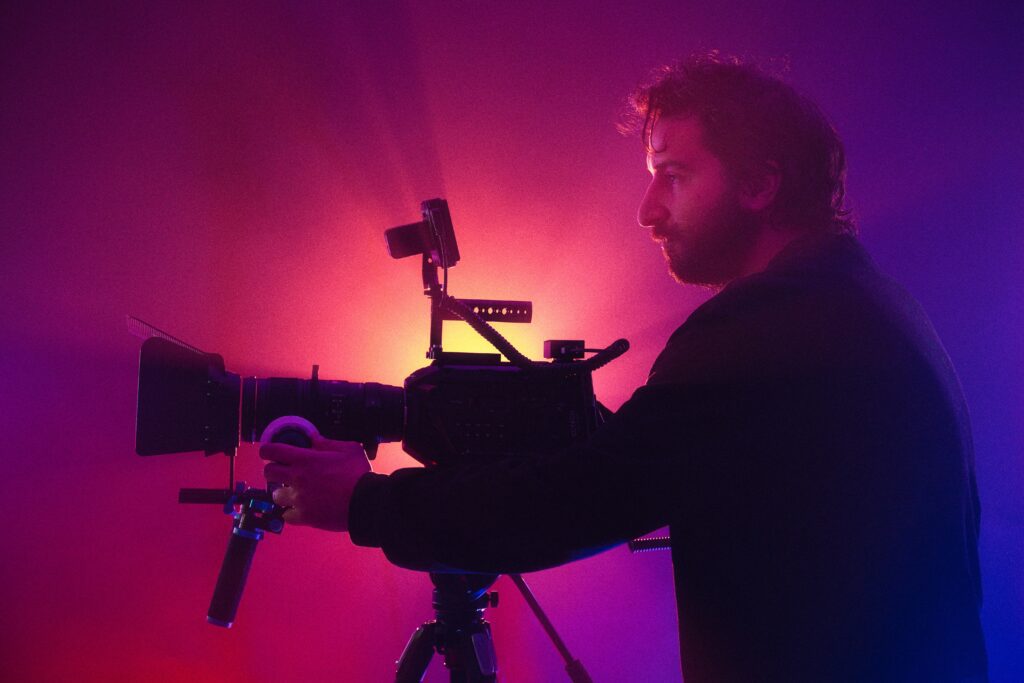
In any film you make the primary focus areas to evaluate will be:
1) the script
2) the sound
3) the lighting
4) the picture
5) the acting
6) the editing
These are what are most commonly responsible for how good or bad a film is at the end of the day. They are the foundations of filmmaking.
You’ll find these potential problems show up in the same ways from one film to the next. The good news is that there are simple solutions for each one. If you know what to look for that’s half the battle.
After we cover the warning signs and the solutions for dealing with them, we will look closer at how to identify these things when or if they come up. For now, let’s put attention on where things go wrong when making a movie so you get the most out of yours.

Warning Sign #1: "The Script"
THE SCRIPT IS WEAK, CLICHE OR CONFUSING
If the script sucks the movie is going to suck. Usually, the best way to tell if a film will be good or not is by the quality of the screenplay. It’s your foundation. It’s the blueprint of the whole thing.
Be patient with the story you are planning to make into a movie. This is one of those things that can make everything more difficult later if you rush it. Generally, a good story leads to a good film. Knowing what makes for good storytelling is one of the most important skills to learn.
If you make a film with a weak, cliche or confusing script there will be almost nothing can save it. It’s like polishing a turd. No matter how good any of the other elements are it’s still a piece of $#%t.
What makes a screenplay/script weak?
- it lacks emotional depth or emotional impact on the audience.
- it doesn’t go anywhere: no meaningful discoveries are made.
- it does not deliver on a promise: to be scary, funny, exciting…
What makes a screenplay/script cliche?
- it feels like a copy of something that’s already been done.
- it uses common ideas and doesn’t explore new territory.
- there is no original voice, take or approach in the narritive.
What makes a screenplay/script confusing?
- it is difficult to follow the story events in a meaningful way.
- the characters are difficult to keep track of or care about.
- it gives out too much information that goes unexplained.
What makes a screenplay/script boring?
- nothing really happens to provoke an emotional response.
- the story is obvious and predictable: no intrigue or surprise.
- the main character is not likeable, interesting or challenged.
Occasionally, a screenplay will work even if it is a little predictable or even superficial. In some cases a really scary or funny movie can create such an emotional response that story elements get overlooked. In any matter, run your script through this before you produce it.
If you want to make sure your movie doesn’t suck than write or choose a great screenplay for your source material. If you have gone ahead with a less than ideal script and you are trying to fix it there are a few solutions available, but they may require making tough decisions.
…the solutions to this are simple, but not always comfortable:
Solution - REWRITE SCRIPT OR GET A NEW ONE...
If it’s not too late and you have not shot the film yet thank your lucky stars because you just saved yourself and others a lot of time and money. The solution is to either rewrite the script or scrap it and just move on to another one if this one is not salvageable.
Identifying if the script is good or not is one of the most important skills you can learn. Sometimes the idea is good, but the execution is poor. Sometimes the concept is just boring or common and it needs a serious change to be any good. Be honest in your evaluation.
Solution - RESHOOT THE MOVIE OR FILM MORE...
If you shot the film already and you know the script sucks you got to make a judgement call. It is to either scrap the film or to try to save it. Ask yourself if it is worth the time and money required to finish it, or if it would be better to just move on to a new one.
If you think you can save it, and you have enough resources available to do so, rewrite what’s not working and reshoot that. If some of it works, but other parts could be improved, just do those parts again. The project ends when you decide it does.
Solution - BE CREATIVE ABOUT MAKING IT WORK...
If you already have investors in your film it is your responsibility to finish it or give them their money back. This may factor in to your decision making around all of this. Do your best to follow through and at least honour having some kind of final product.
If you have a script that has a good concept, but it’s not coming across, workshop it. It may be a matter of taking a different approach with things. Maybe it needs a different lead character or a better antagonistic force. Play around with story elements.
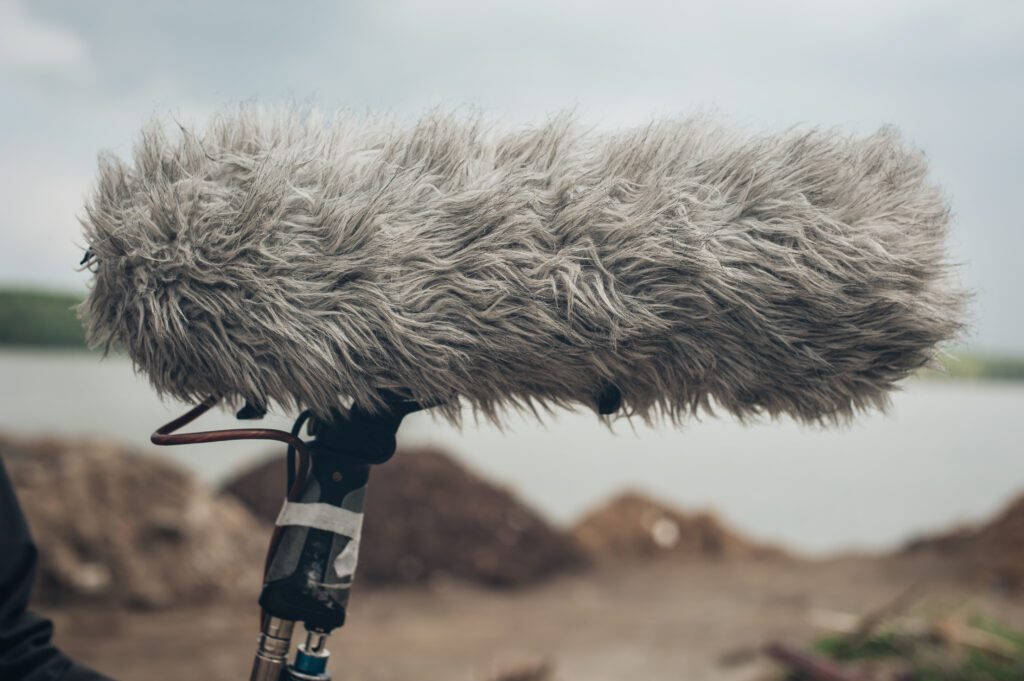
Warning Sign #2: "The Sound"
THE MOVIE'S SOUND ISN'T SMOOTH OR CLEAN
Sound can be the biggest culprit in making a film suck. Many filmmakers get caught up in image of what things look like, but fail to give attention to the audio. The best filmmakers out there know that making a movie is one part picture and two parts sound.
This is one area where you need to have an attention to detail. There are multiple areas where the audio of a film can either cause it to suck or have it end up punching above it’s weight. It’s one of those things that you want to give attention because it makes a real difference.
First of all, for your on set sound recording it is worth it to have quality audio gear. Do not cut corners here if you can. Even if you are on a very tight budget there are great options available to make sure that the sound in your film feels smooth and clean.
In some cases you might find you do everything right, but the sound is just not working when you hear it in post. The good news is that there are often ways to fix this, but it is going to take some extra time and energy to do it. This is worth it. Don’t skip or skimp on sound.
Then there is the sound done in post. This can be the composition of music you add in to enhance the scenes or the foley sound effects you use to make things pop. Bad music and cheap sound effects can devalue your film in a big way so choose wisely in these areas.
The sound quality of your film is a mark of professionalism. One thing that makes an amateur filmmaker stand out is low quality sound in their film so if you are finding yourself in this position, it’s vital you fix it. Sound can make your film unbearable in some cases.
…there are a few solutions for dealing with sound issues:
Solution - DO SOME A.D.R. WITH THE ACTORS...
In top studio films the actor’s dialog is often ADR’d a lot of the time. This stands for Automated Dialog Replacement. To do this have the actors rerecord their dialog in post (after the fact) and overlay it with the audio that was captured on the day of filming.
Ideally, this is done in a controlled sound booth. The aim is matching their lips in the recorded picture with the new and improved audio that is recorded in a crisp, clear way. It’s not always necessary, but do it if your film dialog recordings sound amateur or cheap.
Solution - GIVE ATTENTION TO THE AMBIENT NOISE...
Every location has a signature sound, even if it is dead silence. The point is, not all places sound the same. A busy city street scene will have a different auditory experience than being in the middle of the woods. A great film honours the location’s voice.
If the background noise of a film is dominating or distraction from things your film is going to suck. Make sure to record ambient noise for a minute in every location you film in. You can add this in post to help blend the sound editing of the scenes later.
If your ambient sound is not well recorded take the time to go out and record something new, or purchase something online. In this case you may need to rerecord a lot of other sounds again as well, like dialog and sound effects to make for a good sound mix.
Solution - USE FOLEY: ENHANCE SOUND EFFECTS...
The sound of a film can always be improved and enhanced. Foley is the art of adding sound in the post-production process to give things more of an impact on screen. It can be a major player for improving the quality of the cinematic experience.
If the sound in your film is falling flat consider adding enhancements to help bring things to life. This can be done for big things like action sequences or for small, simple stuff, like footsteps or a door closing. It can also improve the production value of your movie.
Solution - GET QUALITY MUSIC OR A COMPOSER ...
The sound of a film can always be improved and enhanced. Foley is the art of adding sound in the post-production process to give things more of an impact on screen. It can be a major player for improving the quality of the cinematic experience.
If the sound in your film is falling flat consider adding enhancements to help bring things to life. This can be done for big things like action sequences or for small, simple stuff, like footsteps or a door closing. It can also improve the production value of your movie.

Warning Sign #3: "The Lighting"
THE FILM'S LIGHTING IS UGLY AND UNNATURAL
It costs a lot of money to make a film properly so when we are doing it independently we are often cutting corners to limit the expenses. This may mean not having enough lights to work with, or in other cases it may mean not having any lights at all.
Making an indie or low-budget film may also mean that you must work with inexperienced people to get it done. So even when we have the film equipment we need to do things at a professional level, that does not mean that it is being used effectively by the crew.
If you have a budget to make your film hire the best people you can and help them get the equipment they need to do their job effectively. Have a reference point you can show them for what you want to achieve, like another film that matches the visual pallet you are going for.
One of these four problems generally occur when lighting a scene:
1) there is not enough light so some things are too dark
2) there is too much light so some things are over-exposed
3) there is not enough contrast or colour so things are bland
4) the wrong things are getting light or key things are not
If you are not getting the cinematic look that makes your film have that professional feel it is going to come down to only a few things. Being able to identify what is going wrong helps you to correct course and fix it. So, keep an eye on the brightness, darkness and colour of things.
When you are evaluating the quality of image you are capturing it comes down to the lighting of the scene and the composition of the shot. For now, we will focus on why the lighting is working or not working and how to deal with it in a way that makes your film look better.
...if the lighting doesn’t feel cinematic here are your options:
Solution - USE DARKNESS TO ENHACE LIGHT...
Controlling the light as a filmmaker is also about being in control of the darkness as well. Depending on the genre or style of your film it can be the use of darkness that is what matters most. Keep this in mind when you are lighting a scene in your film.
For a horror film the darkness can obviously add to it in most cases. This may mean filming at night or in enclosed areas can to hide the surroundings. Lighting a film effectively can be helped by choosing locations that make it easier to achieve what you are after.
Sometimes it is the difference between knowing what to light and what to leave in the dark. If you see a casted shadow you don’t want then add light to where it is hitting. On the other hand, if a shadow on the face makes things more dramatic, go with it.
Solution - WORK WITH WHAT IS AVAILABLE...
If you are making a low-budget film that only allows for a very minimal amount of lighting equipment you’ll need to get creative. Avoid overly dark areas that you are unable to properly illuminate and utilize given light sources, like the the sun.
Getting your hands on some house lights or a bounce board can be an easy and cheap solution for helping you out. A filmmaker must control and work with light to be effective. To achieve a cinematic look consider at least renting or buying a small lighting kit.
Otherwise, use whatever lights you have at your disposal. They may not be film lights, but it’s about being creative and making resources out of what you can get easily. Use portable house lamps, flashlights, headlights, whatever you can to build your scene.
Solution - COLOUR CORRECT AND COLOUR GRADE...
If you are in post-production and you discover that your shots are not well lit there may be a way to save things. In some cases you can get away with colour correcting the shots to brighten them up. It’s not advised to rely on this solution, but it’s option sometimes.
If your film has quality lighting, but it’s not translating when you are looking at the captured footage, don’t stress out. One of the ways to make a image pop on screen is by enhancing it in post. Make sure to invest the time in colour grading your film after it’s done.
The lighting in a film will fall flat when you don’t improve upon it on post-production. There initial footage needs to have quality light to work with, but it’s often in the editing room that the lighting comes to life. Don’t skip this step. It can make a real difference.

Warning Sign #4: "The Picture"
IT LACKS A VISUALLY CINEMATIC EXPERIENCE
The easiest way to shoot a film is to put the camera on a tripod, hit record and capture something. Many times it is all you need to do to get all the coverage for a scene. Although, if that is all you do then there is a chance that things will get visually boring or feel stagnant.
Too many static shots without enough movement or change can make things feel boring. At the end of the day a movie is a visual experience and you want to find ways to deliver on that as a filmmaker. You can do this by helping certain moments be more impactful.
This can be done by shifting focus, moving for a reveal or simply finding the flow of things and having each shot support it. If you find that there is nothing really happening in a scene physically, consider how the shot you choose can support the emotional context of what is going on.
Moving the camera to get dynamic shots can be a good way to make things more interesting. Blocking the scene so the actors have physical moves within it can also help inform the best ways to move the camera. These things tend to go hand in hand so keep both in mind.
Being dynamic in the way you film your movie can make it come alive, but you are going to want to do this with purpose. Moving the camera makes things more complicated in a verity of ways, like costing more money, more time and it will usually requires more help.
Also, with camera moves, more can go wrong. There is also more of a setup involved in accomplishing them. This is why you may find it is not practical to do a moving shot all the time. Every filmmaker has to choose their battles so if you move the camera do it with purpose.
The point is, you want to breathe life into your movie and playing around with the camera moves or the character action in a scene is a great way to do this. Make a plan when you set out to shoot your movie, but also be open to get creative on the day when inspiration strikes.
…if the film has the potential of falling flat, try these options:
Solution - GUIDE THE AUDIENCE'S ATTENTION...
What helps a movie to be enjoyable is getting so wrapped up in it that you forget you’re even watching one. It has a natural flow from moment to moment, like you are seeing exactly what you need to be seeing at the right times. This can all be done on purpose.
When it comes to making a movie feel more dynamic and less static it’s all about creating meaningful change. That can be by moving the camera in a certain way, or by purposefully drawing the audience’s focus toward something that informs story or character.
The best way to make sure that your film comes alive is to look closely at the script for the answers. Find the places that would benefit from getting more attention and consider what it might take to create a more powerful experience out of them.
Solution - MOVE THE CAMERA WITH PURPOSE...
A well placed camera move at the right time can make a world of difference. To be effective avoid just moving the camera for no other reason than it will look good or bring up the production value of your film. Make all your camera moves serve the story narrative.
In making a film you’ll have to meet the demand of getting the day done on time, versus achieving your grand vision. This will be a factor in what you are able to pull off. So if you are opting to do a moving shot make time in the schedule and budget for it.
There are several different camera moves available to help your film feel more dynamic. The right camera move will often depend on the situation you find yourself in. Choose the one that will help you tell the story in the best way possible.
Solution - EXPLORE MOVEMENT IN THE SCENE...
A good film director has a vision for their movie, but they also remain open to good ideas from others that might help bring it to life. When you make a film you want to go in with a plan, but at the some time leave room to be flexible so you can allow input from others.
When it comes to working with actors it can be helpful to let them rehearse the scene first. Before you give them any direction watch what they do all on their own and see if they find movements in the location that inform better ways to capture it.
If the actors are standing still the entire time and not moving at all don’t force it. Sometimes stillness is necessary. If there are motivated reasons to get them to take an action suggest it to them and see if they can work it in. Then, choose a shot that supports it.

Warning Sign #5: "The Acting"
THE ACTING IS BAD, OR JUST TOO AMATEUR
One thing that will make a film suffer more than anything is bad acting. As a filmmaker it is vitally important that you can identify it. It’s just one of those things that audiences will not forgive. Sometimes the success of a film is entirely dependent on the quality of the performances.
To define bad acting for the sake of this warning sign let’s say that it is “anything that is not natural or believable in the context of the story“. Not all films demand the same things of the performers. Some require grounded realism, while others are larger than life.
In an ultra-realistic story the acting style will be much different than the kind we would find in a spoof comedy. Some actors who are funny and have a lot of charisma can flourish in a light-hearted film, even if their creative expression is beyond something normal.
On the other hand, a deeply emotional actor might flourish in a drama, but they are underwhelming in a comedy. Casting the right actors for your film is one of the most important things you can do as a filmmaker. The actors will do a lot in helping you bring it to life,
Primarily, you want to avoid are actors who are “schmacting“. These are the performers who try too hard to act, or you can see their technique coming through in their performance. You’ll usually know it because it feels false and you wouldn’t believe it if done in the real world.
The “schmactor” lacks authenticity and their performance feels put on. It’s like watching a person do an act instead of witnessing someone truly living their life and it just so happens to be captured on screen. This is bad acting unless the point of the role is to do this.
The “bad-actor” will force things, instead of having a solid process that allows them to be at ease in their performance. They do not come off as natural, believable or real. It’s usually because they lack experience or because they don’t have enough confidence in themselves.
The best thing you can do to avoid bad acting in your film is to put a lot of care and attention into the casting process. Hold auditions and find the best option by having multiple actors read for the part. Cast the actor that will make your life easy and brings the character to life.
…if you end up with bad acting, here is how to deal with it:
Solution - GIVE THEM THE “DO LESS” DIRECTION...
This can be an incredibly effective direction. Bad acting can simply be a product of the actor trying to do too much, when all they need to do is just say the line. By getting them to do nothing more it releases the pressure of them feeling like they have to perform.
Actors have a very challenging position in the film industry because most our not in control of their careers. This can cause them to lack confidence in themselves, not feeling like they are good enough as they are. Their need to impress can get in their way.
You can potentially help a struggling actor to have an incredible performance by being a supportive and encouraging leader. Let them know that they already embody the character as they are and that this is why you cast them in the role.
Solution - GET THEM TO FOCUS ON BREATHING...
Sometimes there is not enough going on for the actors emotionally and you might feel to need for them to dig deeper. Always keep in mind that it’s best not to force it anything so be careful about how you direct them. Focusing on breath can be effective.
If an actor is having trouble emotionally connecting to the scene there is a good chance that they are not in touch with their body. By getting them to breathe deeply into their belly they will begin to tap into feel more and uncover hidden emotions.
Solution - DIRECT THEIR ATTENTION OUTWARD...
Actors can become self-conscious about their performance and this can make them overthink what they’re doing. Sometimes, in wanting to do a good job, they put their attention on themselves and what they are doing, instead of what is happening in the scene.
This misdirected focus can undermine a performance. It can cause the acting to feel disconnected or self-indulgent. So if this happens chances are the actors are in their heads and their focus is directed inward, instead of outward, like it needs to be.
To remedy an unnatural performance, direct your actor to focus on what is happening outside of them. Have them put all their attention on the other actor(s) and have them focus simply on responding to them in the moment however seems appropriate.
Solution - GET EXTRA COVERAGE TO WORK WITH...
If your direction to the actor is not working you could get creative in the editing room with their performance. This is by no means the ideal option to use, but as a last ditch effort it can save your film and help the actor look better in the final cut as well.
You can cover up a bad performance, or the weak moments that are taking away from the film, by getting extra footage. To do this, over shoot the scene with extra coverage and do multiple takes to get different options for the moments they struggle to hit.
As you are filming the movie try to find good moments in each take and make a note of it. Then later in the editing room, you can mix and match workable options with the extra footage. It’s a way to do a workaround if your actor’s performance is inconsistent.
Solution - RELEASE THEM & RECAST THE ROLE...
This is the last option you want to have to use, but sadly, there may come a time were it is necessary. If an actor is problematic it can cost you more to keep them than it will to let them go. Sometimes it is just easier to recast your film with someone else.
Making a film is an investment of time, energy and money. If you are putting it together the team you build is the most important thing to nurture. The people involved will help you make it come to life and it will be on you to make sure to get the best out of them.
If you manage to cast an actor that is just not cutting it be delicate about letting them go. This can be a very sensitive conversation, but it’s ultimately for the benefit of everyone involved if it comes down to this. When you recast learn from whatever mistake you made.
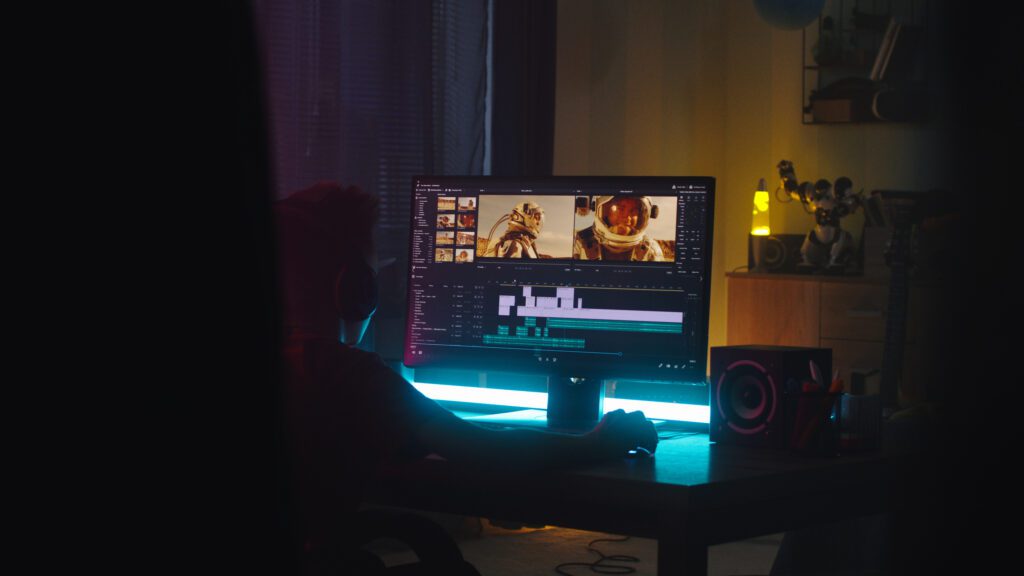
Warning Sign #6: "The Editing"
THE EDITING IS TOO SLOW, OR UNFOCUSED
If you managed to shoot a good film with quality picture, sound, acting, lighting and a good script it would be a shame to have it die in post. The editing is where the magic happens so if things are not working after you got it all done, maybe the film is just not cut well.
Picture editing and sound editing work together in the final cut of a film, so they should both be considered here. If the sound is not smooth in the transitions from one shot to the next it will call attention to the cut. One simple way to fix an edit is to make it sound smooth.
That being said, the picture edit should be done to show enough, but not too much. There is a balance to find here. You want to hold the shot or image long enough to take it in, but not so long that it becomes boring or stagnant. Less is often more in most cases.
If there is a bad acting moment don’t be afraid to cut away from it. You can make or break a performance by how you cut your film together. When it comes to editing a film your job is to make everyone look good and protect them from looking bad if you can.
Finally, the main area where things go wrong with editing come down to things either lacking focus or the pace being too slow. So don’t hang too long on a shot unless doing so truly serves the story. Aim to always stay on point with things and cut what causes your film to drag.
…if any of these things are showing up, here are your options:
Solution - DO TIGHTER CUTS WITH OVERLAPS...
A common mistake with film editing is hanging on shots for too long and not cutting away from them soon enough. It slows the pace of the story down to a crawl and it makes things feel boring. Avoid this by cutting away from things as fast as you can.
Overlapping conversations between characters is a great way to accomplish this as well. Just because someone is speaking does not mean we have to be looking at them. Sometimes out interest is in the listener instead, or what is physically happening.
In any matter, editing is a skill that can always be improved so learn the principles of what makes a well cut film. One thing you can do is try to accomplish multiple things at once with the images and the sounds. The audience can take in multiple things at once.
Solution - CUT AWAY FROM THE BAD STUFF...
Sometimes you get to the editing room and realize that the shot is not working. Maybe the actor says a line in a forced way or there was a weird reflection that showed up for a moment. The simple fix to this is to just cut away from it to something else.
You can make a film better by finding creative ways to not show the things that take away from it. If you don’t have the spare footage or coverage to do this consider doing some reshoots or filming a few additional cutaways that can help you accomplish this.
Solution - USE THE COVERAGE TO COVER UP...
If you film a scene with lots of coverage you’ll have options to play with in the editing room. This is another reason why it is always good to have a combination of tight and wide shots in every scene you do. Coverage can help you to control the focus of the audience.
If things in the environment are standing out in a bad way, cut in tighter and it won’t be in the frame of the shot. If an actor seems to come off as false in their performance by putting it on or doing too much cut to something wider so that it is not so obvious.
When it comes to editing dialog scenes there are usually multiple actors to cut to. Take advantage of this if someone is not performing in a way that is believable. These things happen at times, but nobody has to know about it in the final cut of the film.

How to make a good movie & be better able to identify these warning signs...
Making a movie is one of the most rewarding things you can do in your film career. It is a chance to share your creative vision and show what you are capable of as an artist. To have a final product that you can be proud of pay attention for these warning signs if they come up.
Knowing how to make a good movie is in understanding where things go wrong so you can avoid the common pitfalls. There are few easy ways to help you better identify them so let’s finish this off by giving you a few action steps to help you have an eye for them.
1.) – Watch All Movies With a Critical Eye
Notice things like lighting, sound and acting. If something is working appreciate it and try to understand why works in your opinion. Alternatively, if something is not working, aim to find the warning sign that has been identified in this article.
2.) – Actively Watch Bad Movies on Purpose
One of the best ways to learn how to make a good movie is to know what a bad movie is. There are plenty of examples out there of a bad film that can be found. Try to understand why it is bad. Make sure to identify the warning signs that laid out here.
3.) – Test Film Your Scenes & Sequences
A good way to learn how to make a good movie is to practice the filmmaking craft by testing things out first. If you don’t know how to do something try doing a test run of it. You can run it through these warning signs afterwords to see how it adds up.
There are many ways to improve your filmmaking skills, but nothing is more helpful than actually doing it. With every film you make you will learn something. So don’t be afraid to just go out and do it. You’ll never feel ready, so at some point you have to just trust yourself.
One of the most important things to understand about the filmmaking process is that it’s the team around you that matters most. As a creator your job is to get the right people to help your vision come to life. As the creator, your job will be managing things along the way.
So don’t be afraid to bet on yourself. If you have a vision that you want to bring to life trust in your ability to keep an eye on the quality of things. You can get help and guidance and make it happen now. You might just find that you are closer to making it happen than you realize.


